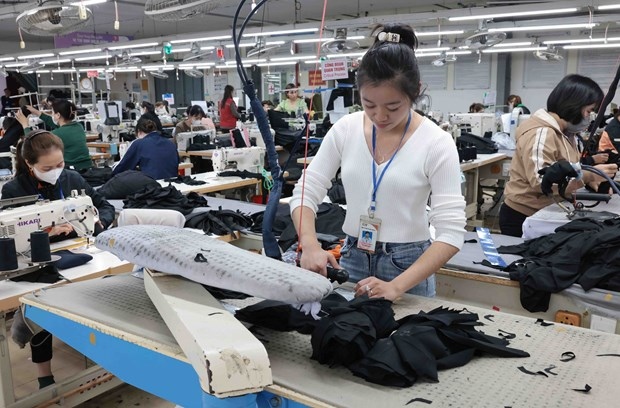FDI flow into garment and textile sector bounces back
The flow of foreign direct investment (FDI) into the Vietnamese garment and textile sector has rebounded thanks to the country’s sound investment climate and abundant workforce as well as its open economy, according to insiders.
Chairman of the Vietnam Textile & Apparel Association (VITAS) Vu Duc Giang said foreign garment and textile producers are expanding their operations in Vietnam to take advantages in the Vietnamese market.
He held that various free trade agreements (FTA), particularly new-generation deals such as the Comprehensive and Progressive Agreement for Trans-Pacific Partnership (CPTPP), EU-Vietnam FTA (EVFTA) and Regional Comprehensive Economic Partnership (RCEP) to which Vietnam is a signatory is a locomotive for the sector to lure both domestic and foreign investors.
The management board of industrial parks of the northern province of Nam Dinh has granted an investment certificate to Hong Kong-based Crystal International Group to carry out its US$60-million Yi Da Denim Mill project.
The group has run various plants in the northern localities of Hai Duong, Hai Phong, Bac Giang and Phu Tho and the southern province of Binh Duong, with a combined export revenue of some US$1 billion and generating jobs for 40,000 local workers.
Meanwhile, the world’s leading zipper producer YKK Corp. from Japan invested in its second plant at Dong Van industrial zone in the northern province of Ha Nam. According to YKK Vietnam General Director Yuji Furukawa, after 25 years of operation in Vietnam, YKK has increased its zipper productivity by 100 folds, and the number of workers seven folds to 2,800 labourers.
Earlier, YKK had to import several materials to provide its local customers. However, its Vietnamese plant is now able to manufacture all of YKK products and even ship them to foreign countries like Cambodia and Myanmar, he said.
Most recently, SAB Industrial Vietnam Company Limited under China's Weixing group put into operation its US$62-million factory in the north-central province of Thanh Hoa. Covering 66.44 hectares, the factory produces various items, including metal, plastic and nylon zippers, and plastic and metal buttons.
Besides helping the sector reduce its dependence on imported raw materials, FDI capital has played an important role in reducing manufacturing time and transport costs, making products become more competitive.
In Quarter 1 of 2024, Vietnam gained nearly US$8 billion from garment and textile export revenue, with FDI firms contributing over 60% of the total.



